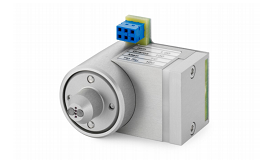Measuring Small Samples with the MDC Mercury Probe
The MDC Mercury Probe works by lowering the pressure at the wafer surface and allowing mercury to be pushed in contact with the sample. For proper operation, the active region of the probe, comprised of the vacuum ring and mercury dot and ring contacts, must be covered completely. There are several techniques that can be used to measure samples smaller that the recommended minimum size. These are discussed here.
1) It is possible to operate the 802B without mercury in the ring contact. You must block the smaller stainless steel tube that reaches into the mercury bottle. This can easily be done with a small piece of rubber placed over the end of the tube or into the end of the tube. A drop of rubber or silicone rubber glue can also be used to block the tube. These blocks can easily be removed in case the ring contact is needed in the future. The glass vial must still be kept in place, but it can be empty.
2) For general samples whose size is not consistent, use a thin, flexible sheet of polyethylene or Mylar to assure a good vacuum seal. Cover the sample and vacuum ring with a piece measuring at least 5 cm x 5 cm (2” x 2”). If the back contact must be used, use a piece of metallized Mylar that is folded in half with the conductive side on the outside.
3) For regular shaped samples, use a thicker plastic sheet. Cut a hole in the center of a 5 cm x 5 cm (2” x 2”) piece to match the sample. The thickness of the plastic sheet should be less than the sample thickness.
4) For very, very thin samples (less than 10 microns (0.5 mils)), simply affix the sample to an insulating or conductive support sheet measuring 5 cm x 5 cm (2” x 2”).






